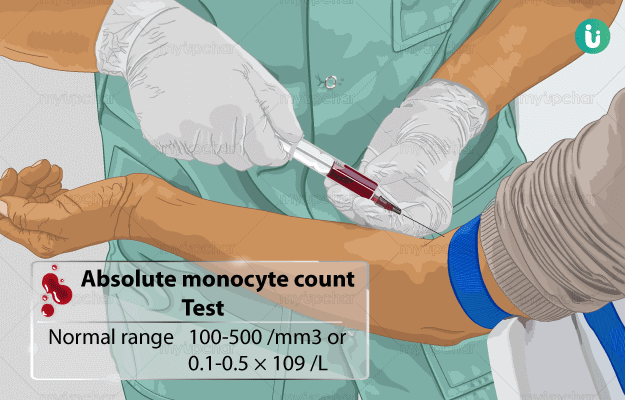What is Absolute Monocyte Count (AMC) test?
Absolute monocyte count (AMC) test is carried out to measure the count of monocytes in the blood sample of an individual. Monocytes are white blood cells (WBCs), which are uninuclear (with a single nucleus) and non-granular in appearance. They are produced in the bone marrow and travel to different tissues through the bloodstream. Once inside tissues, monocytes convert into macrophages - a type of phagocytic cell that kills pathogens by engulfing them. Monocytes are the second line of defence mechanism of the human body and in the phagocytic role. They are responsible for the removal of injured and dead cells, microorganisms and insoluble particles from blood circulation.
AMC test is done to count the number of monocytes in the blood in conditions such as tuberculosis, other bacterial and viral infections, inflammatory conditions and malignancies.






























